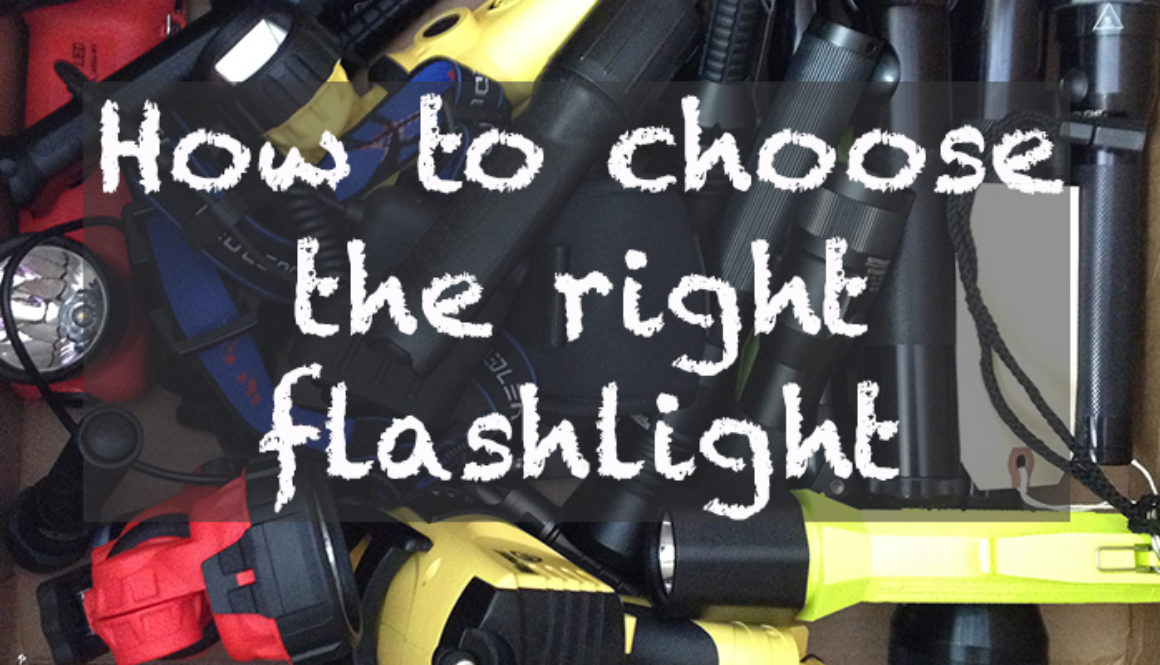How to Choose the Right Flashlight
The process of choosing a flashlight can seem daunting at first. With all of the new flashlight technology and thousands of choices available, it’s harder than ever to make a decision. We’ve pulled from our over 15 years of experience in the flashlight industry to come up with a few simple steps that will help you choose the flashlight that best suits your needs.
Pick your application
Determining how you will be using your flashlight is the most important step of the flashlight buying process. Will you be using it for general home repair? Are you a law enforcement professional in need of a search and rescue flashlight? All of these questions will help you determine what flashlight will best suit your needs.
Here are some of the basic questions to ask:
What type of battery do I prefer?
What kind of beam do I need?
What size flashlight is best for my application?
What kind of functionality do I need?
What type of material or color do I prefer?
What kind of warranty or support do I want down the road?
Let’s dive into each of these topics separately.
Battery type
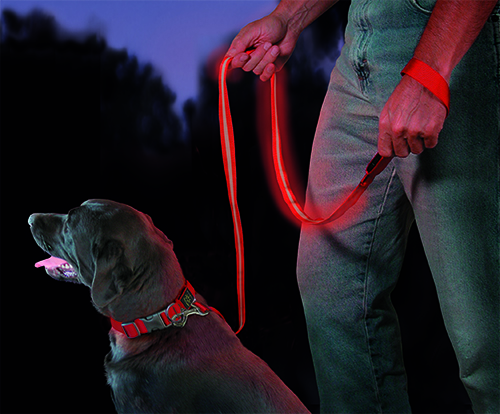
The main decision you have to make when choosing the battery type of your flashlight is whether you want a rechargeable or a non-rechargeable battery. If you will be using your flashlight three times a week or more for work or other tasks like dog walking, it makes sense to get a rechargeable flashlight. The higher up-front cost of the battery and charging system will soon be offset by savings on replacement batteries down the road.
If you plan to use your flashlight less frequently – for special projects, to keep in your car, or to keep at home in case of a power outage – it may make more sense to get a non-rechargeable flashlight. Non-rechargeable batteries come in many shapes and sizes. There are the standard alkaline batteries that come in AA, AAA, C, D, and 9V sizes. There are also non-rechargeable lithium batteries that come in AA, AAA, and 9V sizes. The benefit of using primary lithium batteries over alkaline batteries is that lithium batteries perform better in cold temperatures (-40° to 140°F). Alkaline batteries have an operating temperature of 0° to 131°F. Primary lithium batteries are also less likely to leak and possibly corrode your flashlight, so they are good if you need to store the light for long periods of time without use. Not all flashlights can accept lithium batteries in place of alkalines, however. It’s best to consult the instruction manual for your flashlight before switching to lithium batteries.
Beam type
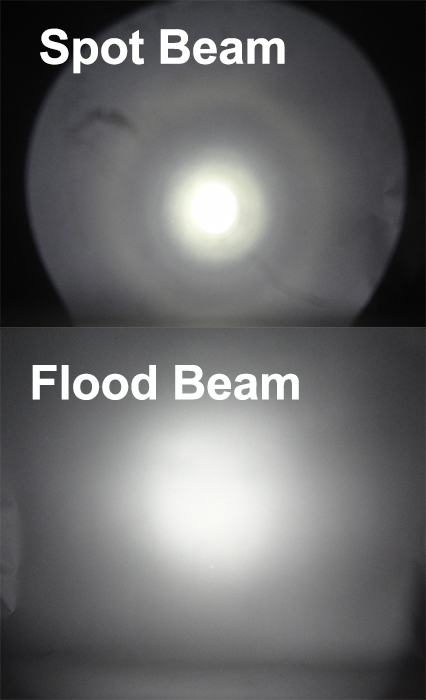
Another very important decision with any flashlight purchase is choosing what style of beam you need. Flashlights with a “flood” beam are generally best for lighting up a large area at a short distance. Flashlights with a “spot” beam pattern have a narrow, focused beam that are best for lighting up a small area at a long range. Most flashlights will have a combination of spot and flood beams, but there is a wide range of possibilities. Some flashlights, most notably LED Lenser flashlights, have an adjustable focus beam. This means that you can choose if you want to have a wide flood beam or a focused spot beam by adjusting the bezel of the flashlight.
Flashlight beams are determined by the type of reflector used. The reflector is the (typically) shiny metallic cone that surrounds the LED. Flashlights with a spot beam will have large reflectors to help carry the beam a long distance. Lights with flood beams will have small or no reflectors so the light will spread out across a wide area.
What type of beam is best for your needs? Spot beams are great for firefighting, search and rescue, hunting, utility lineman – any time you need a long range beam. A few examples of spot beam flashlights are the Streamlight Waypoint, the Maglite Pro 2 D-cell Flashlight, and the Streamlight Survivor LED. Flood beams are great for general home repair, automotive work, reading, and any other “up close” activities. Examples of flood beam flashlights are the Princeton Tec Fuel headlamp, the Streamlight Knucklehead work light, and the NightStick 61 LED multi-function light.
Flashlight Size
Another factor to consider when choosing a flashlight is what size of light you need. Do you need a keychain flashlight, or would you be better suited with a 6 D-cell? Application, battery type, and beam type will all help determine the size of the flashlight you are looking for as well. Generally, there are four different size categories of flashlights. From smallest to largest, they are – keychain lights, every day carry flashlights, duty lights, and search lights.
Keychain flashlights are very small in size, typically 3″ or less. They are meant to be carried with you at all times as a backup or emergency flashlight. Keychain lights often run on coin cell batteries, like the kind you would find in a wristwatch. Keychain lights are good as a back up flashlight, but they typically are not bright enough for most professional tasks.
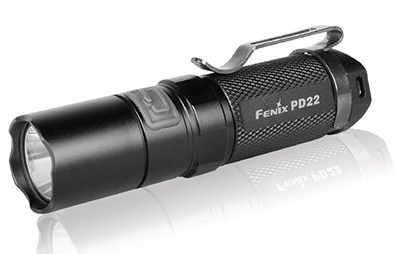
Every day carry flashlights are just what the name implies – lights that you carry with you every day. These generally range in size from 3″ long to about 7″ long, and are much more powerful than a typical keychain flashlight. This category includes pen lights, pocket lights, and lots of tactical-style flashlights. A good example of an every day carry flashlight is the Fenix PD22 because it is a nice brightness of 210 lumens with a small size of just 3.5″ long.
Duty lights are typically larger than every day carry flashlights. They are meant to give you a lot of power in somewhat small package. Duty lights can range from 5″ long all the way up to 14″ long for some large rechargeables and Maglite flashlights. Duty lights will typically have longer run times than smaller flashlights so they can be used by professionals who have 8-12 hour night shifts.
Search lights are the largest of the handheld flashlights. They can measure anywhere from 7″ long all the way up to 17″ long. These flashlights are meant to have a long range beam – many have beam distances over 1,500 feet! A good example of a search light is the Streamlight Stinger LED HP flashlight, with a beam range of 1,551 feet.
Functionality
Functionality is one of the most important things to consider when deciding which flashlight is best for you. Some flashlights have a single output – only one brightness level. Some have five brightness levels or more. Some flashlights have a twist head, and some have a pushbutton switch. When thinking about functionality, make sure to consider how often you will be using the flashlight. Most flashlights with multiple brightness levels will have much longer run times than those with just a single brightness level. If you need a tactical flashlight, you may want one with just a single brightness level, or at least one that will always come on in the highest setting.
One of the newest developments in flashlight technology is the advent of “reprogrammable” lighting. Flashlights like the Streamlight ProTac HL and the LED Lenser M7R come with different preset functions that change the order of the different brightness levels. For example, if you need quick access to strobe, you can reprogram your M7R to “Tactical” mode – where you have only full power and strobe options. If you prefer to have access to SOS, keep the M7R in “Professional” mode. This gives you high power, low power, dimming, SOS, and strobe.
Flashlight Material/Color
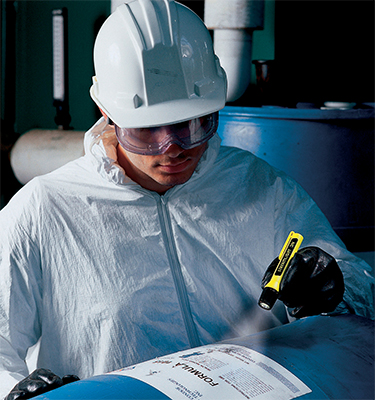
Flashlights typically come in two different types of material – aluminum or polymer (plastic). Some professions will require one material or another. For example, many industrial and utility professionals can only use flashlights with non-metal bodies because of plant restrictions. This is the reason why many safety-rated flashlights only come with polymer bodies. Aside from those type of requirements, the choice of whether to go with an aluminum or a polymer flashlight is up to personal preference. Polymer-bodied flashlights are usually less expensive and have more color choices. Aluminum flashlights are perceived as more durable and they give you that typical flashlight “look.”
Flashlight Warranty
Most flashlights carry some type of warranty, ranging anywhere from 6 months to limited lifetime. Some companies like Streamlight and Maglite have Authorized Repair Centers across the country that can take care of any warranty issues for you locally. Some companies, such as Princeton Tec and Underwater Kinetics, have you send your flashlight directly to the factory for repair or replacement. Companies based outside of the United States, like Fenix and Nitecore, may have you handle your warranty through the distributor you purchased the light from, not through the company directly.
It’s certainly worth considering the different warranty options offered on various flashlights. It’s up to you to determine how important the warranty is versus other functions like brightness, beam type, and price.
Choosing a flashlight may seem like a daunting task at first. Once you break down what battery, beam type, size, functionality, material, and support you need, the decision becomes much more manageable. Picking a flashlight can actually be fun! Flashlight choices have really exploded in the last 10 years or so with the advent of LEDs. It’s neat to explore all of the latest LED and battery technology. So dive in and don’t look back – and you’ll end up with a great lighting tool!
BrightGuy was established in 1998 as a place for professionals to find lighting tools. BrightGuy stocks over 500 different flashlight models and is an authorized distributor for TerraLUX, ZebraLight, Streamlight, SureFire, Fenix, Underwater Kinetics, Princeton Tec, Petzl, LED Lenser, Pelican, and more.

